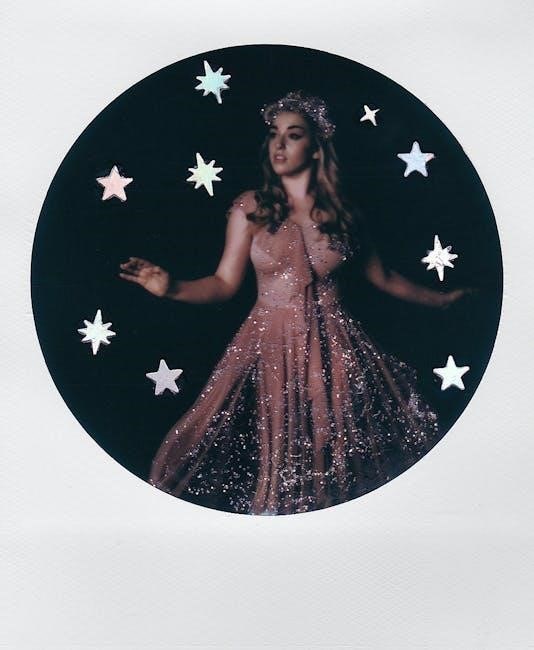Fantastic Mr. Fox PDF: Overview
Roald Dahl’s “Fantastic Mr. Fox” is widely available in PDF format online. You can find free downloads of the book for reading on various devices. These PDFs often include the full text and sometimes illustrations.
Characters in Fantastic Mr. Fox
The story features memorable characters, with Mr. Fox as the protagonist. He is a clever and cunning fox, outsmarting the three farmers, Boggis, Bunce, and Bean, who are the antagonists, threatening his family.
Mr. Fox
Mr. Fox is the central character, celebrated for his extraordinary cleverness and cunning. He is depicted as an anthropomorphized fox, living with his wife, Mrs. Fox, and their four little foxes. Mr. Fox’s primary motivation revolves around providing for his family, often through daring and inventive means, which frequently involve outsmarting the local farmers.
His character embodies resourcefulness and a strong sense of responsibility towards his family’s well-being. Despite the risks associated with his actions, Mr. Fox consistently demonstrates bravery and a determination to overcome challenges, making him a compelling and admirable figure in the story. He loves his wife dearly.
Mr. Fox’s intelligence and quick-thinking are constantly tested as he navigates the conflicts with Boggis, Bunce, and Bean. He always manages to come out on top.
Boggis, Bunce, and Bean
Boggis, Bunce, and Bean are the three antagonists in “Fantastic Mr. Fox,” portrayed as exceptionally unpleasant and greedy farmers. Boggis is a chicken farmer, Bunce raises ducks and geese, and Bean is an apple and turkey farmer. Their personalities are as repulsive as their occupations. They deeply resent Mr. Fox for stealing their livestock.
Driven by their anger and greed, the three farmers unite in an attempt to capture and eliminate Mr. Fox. They exemplify the negative aspects of human nature, standing in stark contrast to the clever and resourceful Mr. Fox. Their relentless pursuit of Mr. Fox highlights themes of class conflict and the struggle for survival.
Their combined efforts to stop Mr. Fox lead to comical yet dangerous situations, emphasizing their incompetence. This solidifies their role as antagonists and sources of humor throughout the story. They are the nastiest three farmers you could ever meet.
Plot Summary
“Fantastic Mr. Fox” tells the story of Mr. Fox, a clever fox who provides for his family by stealing livestock from three nasty and dim-witted farmers: Boggis, Bunce, and Bean. Tired of being outsmarted, the farmers decide to take action and attempt to kill Mr. Fox, leading to a relentless hunt.
The farmers begin by surrounding Mr. Fox’s hole, intending to starve him and his family out. However, Mr. Fox, being incredibly resourceful, devises a plan to dig tunnels to the farmers’ storehouses. He not only secures food for his family but also invites other animals facing starvation to join him in the feast.
As the animals raid the farms, Boggis, Bunce, and Bean become increasingly furious. They devise more drastic measures to stop Mr. Fox, but he consistently outsmarts them. In the end, Mr. Fox and the other animals celebrate their victory with a grand feast, while the farmers are left defeated and humiliated, waiting outside the fox’s hole.

Themes in Fantastic Mr. Fox
The book explores themes of cleverness against brute force. It also highlights the importance of family and community as strengths. Survival and outsmarting adversaries are major themes.
Cleverness and Cunning
Mr. Fox’s character embodies cleverness and cunning, essential for survival against the farmers Boggis, Bunce, and Bean. He consistently outsmarts them. His intelligence isn’t just for personal gain. It is used to protect and provide for his family and community. Mr. Fox’s plans are often audacious, requiring careful planning and execution. His ability to think quickly under pressure is a key aspect of his success. The farmers rely on brute force, highlighting the contrast between wit and physical power.
Mr. Fox’s cunning extends to manipulating situations to his advantage. This is evident in how he navigates the farmers’ traps and ambushes. Even when cornered, he finds innovative solutions to escape. This makes him a compelling protagonist. His actions demonstrate that intelligence can overcome even the most formidable obstacles. The story celebrates the power of the mind over matter. It underscores the value of strategic thinking in challenging situations.
Family and Community
Family and community are central themes in “Fantastic Mr. Fox.” Mr. Fox’s motivations stem from his desire to provide for his wife and children. His actions are driven by a deep sense of responsibility towards them. He risks his life to ensure their survival and well-being. The story emphasizes the importance of family bonds and mutual support;
The wider animal community also plays a significant role. When the animals face starvation due to the farmers’ siege, Mr. Fox unites them. He devises a plan to raid the farmers’ stores and share the bounty with everyone. This highlights the strength of collective action and the importance of community spirit. The animals working together demonstrate that unity can overcome adversity. They create a thriving, supportive environment.

Roald Dahl’s Writing Style
Roald Dahl’s writing style is distinctive and captivating, particularly evident in “Fantastic Mr. Fox.” He employs vivid imagery and descriptive language that brings the characters and settings to life. Dahl uses humor extensively, often incorporating dark or absurd elements that appeal to both children and adults. His writing is characterized by its fast-paced narrative and engaging plotlines.
Dahl’s characters are often larger than life, with exaggerated traits and personalities. He doesn’t shy away from portraying villains as truly unpleasant and heroes as flawed but admirable. His style is accessible and direct, making his stories easy to understand while still being thought-provoking. He often incorporates child-like perspectives and witty dialogue, creating a unique and memorable reading experience.

Adaptations of Fantastic Mr. Fox
“Fantastic Mr. Fox” has been adapted into other forms, including Wes Anderson’s acclaimed animated film. This adaptation interprets Dahl’s story with Anderson’s signature visual style and quirky humor.
Wes Anderson’s Animated Film
Wes Anderson’s 2009 stop-motion animated film, “Fantastic Mr. Fox,” is a notable adaptation of Roald Dahl’s beloved children’s book. The film maintains the core narrative of the book while incorporating Anderson’s distinct visual and narrative style, appealing to both children and adults.
The film features a star-studded voice cast, including George Clooney as Mr. Fox and Meryl Streep as Mrs. Fox. Anderson’s adaptation expands upon the original story, adding depth to the characters and exploring themes of family, community, and identity with his trademark quirky humor.
The visual style is characterized by meticulous attention to detail, handcrafted sets, and a warm color palette. The film received widespread critical acclaim for its originality, wit, and faithfulness to the spirit of Dahl’s work, while also standing as a unique artistic achievement.

Availability of “Fantastic Mr. Fox” in PDF Format
“Fantastic Mr. Fox” is readily available as a PDF download. Many websites offer free PDF versions of the book, allowing readers easy access to this popular Roald Dahl story.
Free PDF Downloads
Numerous websites offer free PDF downloads of Roald Dahl’s “Fantastic Mr. Fox”. These PDFs provide easy access to the full text of the book for readers of all ages. Many sites, including online libraries and educational resource platforms, host these free versions. It is often possible to find PDFs that include the original illustrations, enhancing the reading experience, and may have been published by NUR HANNAH BT AHMAD NATZRUN on 2020-12-07.
When searching for a free PDF, be sure to use keywords such as “Fantastic Mr; Fox PDF download” to locate reputable sources. Exercise caution when downloading files from unknown websites to avoid potential security risks. Some sites may require registration or offer additional resources, such as summaries, themes, and quotes related to the book.



